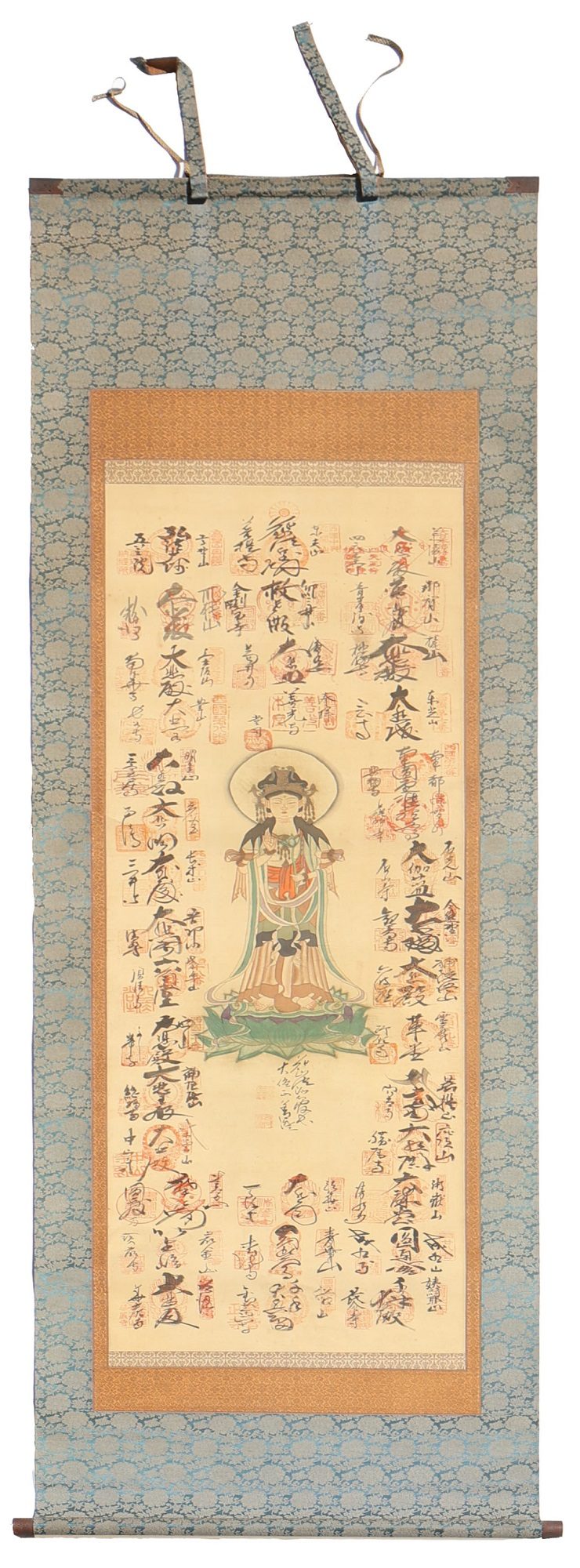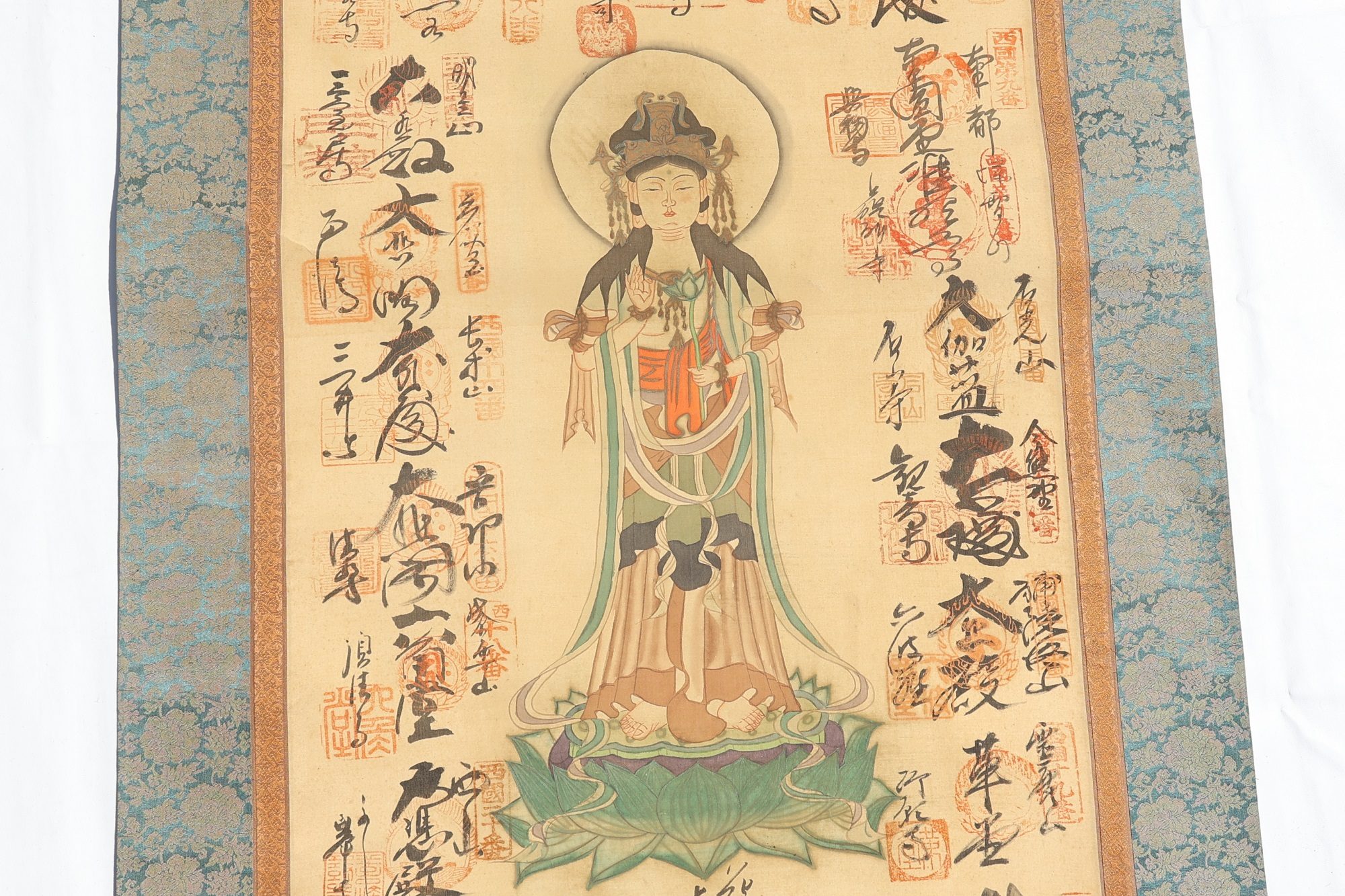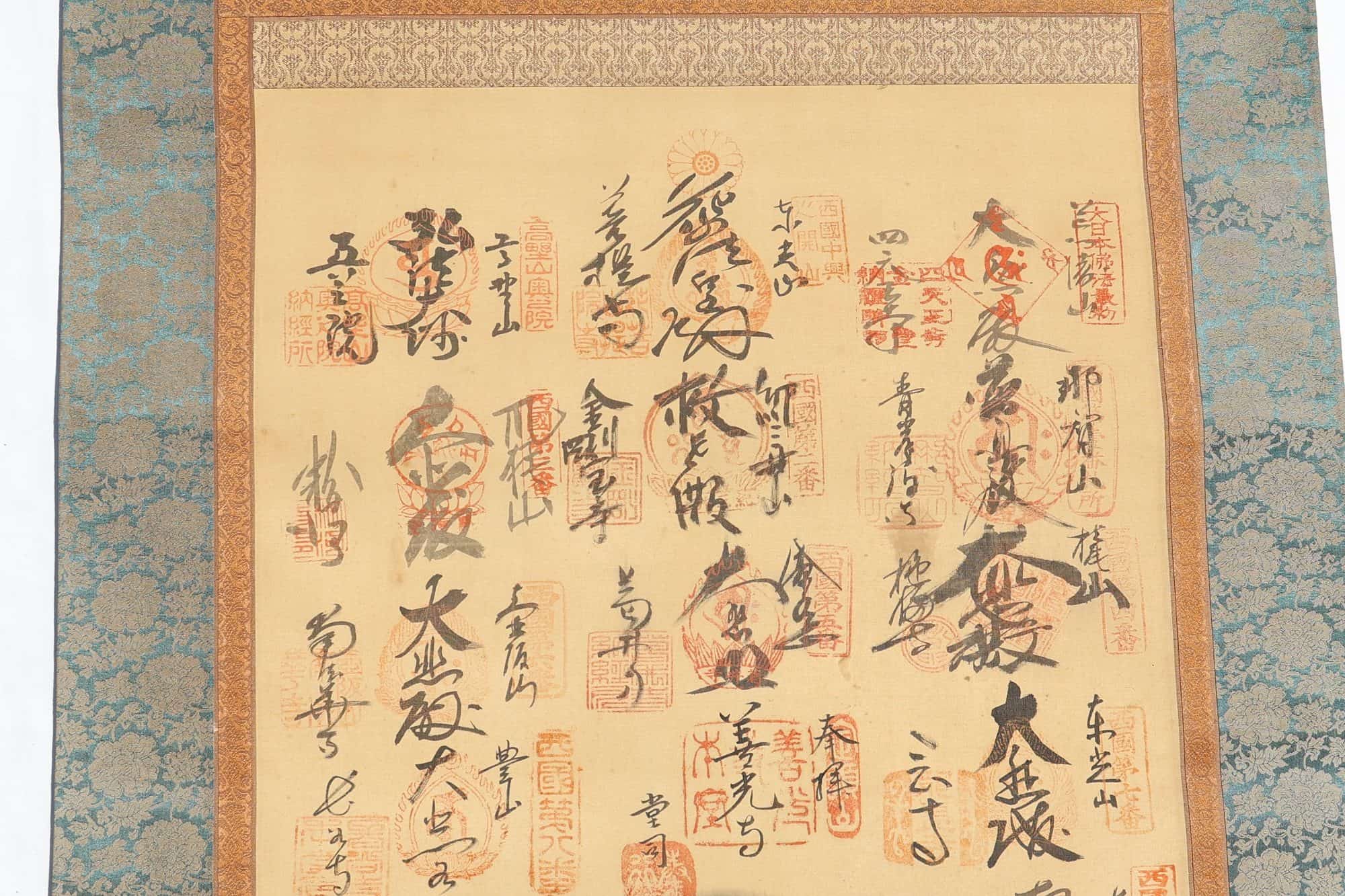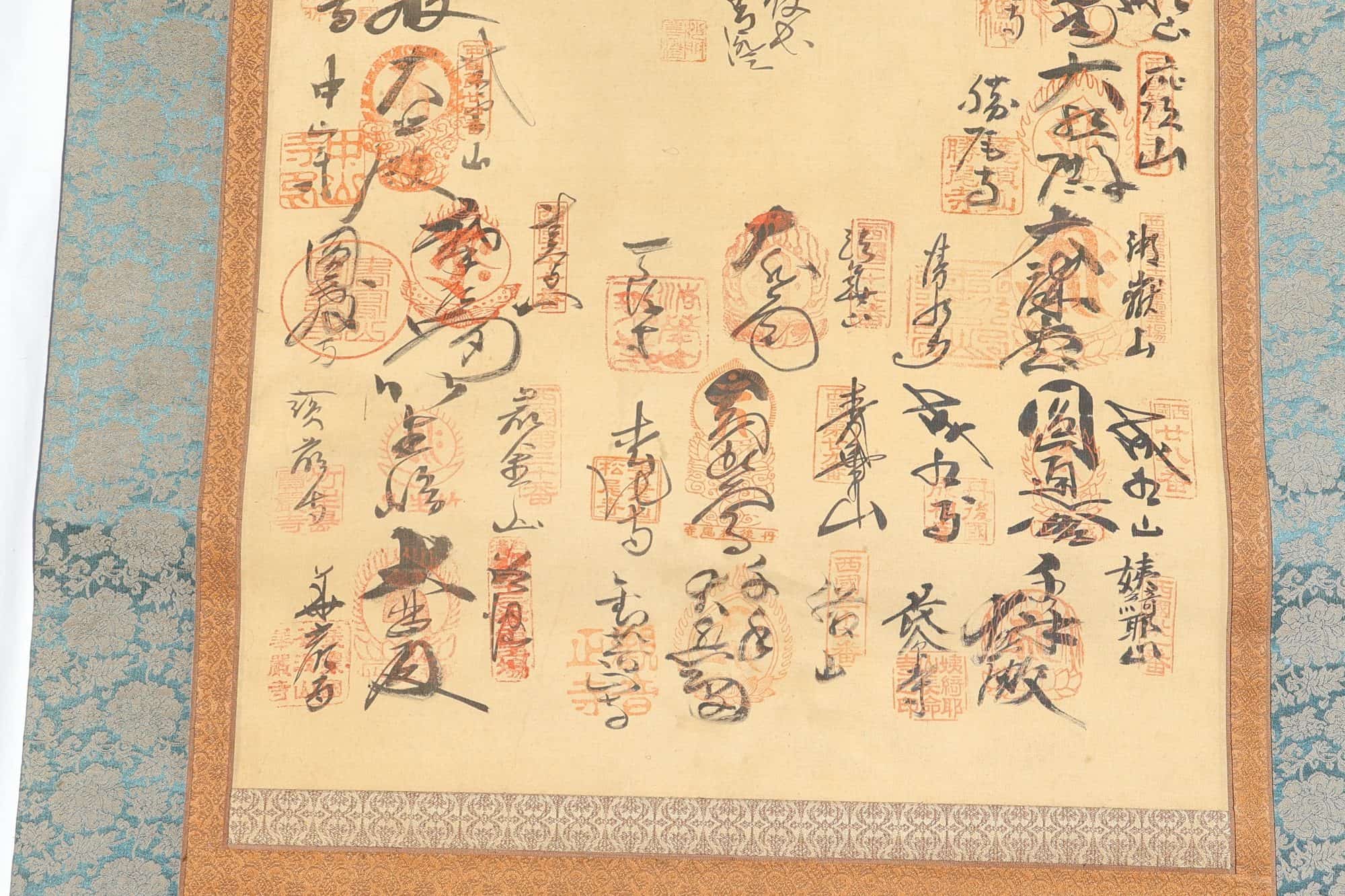375.00 €
The kakemono (掛 け 物), in Japanese art, is an object that hangs on the wall, usually a painting or calligraphy. It hangs elongated vertically, on a wall or inside a tokonoma. The support on which the work of art is made can be made of paper or silk. At its ends are fixed cylinders, called jiku, which help to keep its surface smooth and flat, while allowing it to be rolled up for storage.
Initially the kakemono was hung in a central position inside the main hall of a Zen temple (butsuden), the main building of a Buddhist shrine (hondou) or in the partition of one of the main walls. The kakemono were also located on the walls of other rooms of the butsuden and, later, in the residences of the nobles or wealthy people. With the establishment of the palatine residential style of shoin architecture, the kakemono found its definitive position in tokonoma, where the image of the hanging scroll and the fornicle complement each other.
At present, kakemono can contain calligraphy and paintings of all kinds of genres.
This Kakemono is surrounded by fine silk. A sutra has been written on the paper. The central figure is the Bodhisattva of love and compassion Kannon (Avalokitesvara in Sanskrit). The stamps that appear on the entire surface of this Kakemono would have been stamped in the places of pilgrimage on the route of temples that the owner and bearer of this Kakemono made. Both the silk and paint work is exquisite.
Material: Wooden box, silk, paper with ink and metal for the terminations of the bar.
Size: 69.5x8x7.5 (box), 201 × 61 cms
Origin: Japan
Antique
1 in stock
Additional information
| Weight | 1.2 kg |
|---|
Subscribe and receive the lastest news





